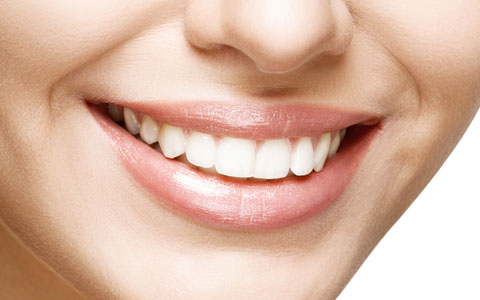Dental Terms
Dental Braces Castle Rock
Dental braces, also known as orthodontic braces, are a dental device used in orthodontics to correct teeth alignment and their position in relation to the bite. They are commonly employed to address malocclusions, including underbites, overbites, crossbites, open bites, as well as issues like crooked teeth. These corrections can be made for both cosmetic and structural reasons. Dental braces are often used alongside other orthodontic appliances to achieve a variety of dental corrections, including palate or jaw expansion, tooth spacing, and jaw shaping. While orthodontic patients are often children and teenagers, an increasing number of adults are seeking orthodontic treatment in recent years.
How Dental Braces Work
The functioning of dental braces revolves around applying controlled force to teeth. An archwire is used to exert force, pushing teeth in a specific direction. This force creates stress within the periodontal ligament, which, in turn, leads to bone remodeling. Bone remodeling is the process where bone is created on one side of the tooth by osteoblast cells and resorbed on the other side by osteoclasts.
Two types of bone resorption can occur: direct and indirect. Direct resorption originates from the lining cells of the alveolar bone, while indirect or retrograde resorption occurs when osteoclasts start their activity in the neighboring bone marrow. Indirect resorption occurs when the periodontal ligament becomes acellular (necrotic or hyalinized) due to excessive compressive stress, resulting in more resorption than bone formation (negative balance). Bone resorption only takes place in the compressed periodontal ligament.
Typically, a tooth moves about a millimeter per month during orthodontic treatment, but this rate can vary significantly among individuals. The efficiency of orthodontic mechanics can also vary, leading to diverse responses to treatment.
Orthodontic Treatment Procedure
Orthodontic services can be provided by any licensed dentist with training in orthodontics. In North America, most orthodontic treatment is carried out by orthodontists, who are dentists with additional post-doctoral training in orthodontics. General dentists can also provide orthodontic services, but they may not have the same depth of specialized training as orthodontists.
The orthodontic treatment process typically involves the following steps:
- Determining Suitability: The first step is to assess if braces are suitable for the patient. The orthodontist consults with the patient and visually inspects the teeth. If braces are appropriate, a records appointment is scheduled to take X-rays, molds, and impressions. These records help determine the issues and the best course of action.
- Brace Placement: Once the treatment plan is established, the orthodontic process begins by applying braces. Teeth to be braced are etched to improve cement adhesion, and brackets are cemented to each tooth. Archwires, which exert the necessary force, are threaded through the brackets.
- Adjustments and Tightening: Regular adjustments are necessary throughout the treatment. The orthodontist tightens the braces to guide teeth into the desired position gradually.
- Interim Steps: In some cases, additional appliances like elastics or spacers may be used during treatment to address specific issues such as spacing or bite correction.
- Retainers: Once the teeth are aligned correctly, the patient is fitted with retainers to prevent them from shifting back to their original position. Retainers can be removable or fixed, depending on the individual's needs.
- Post-Orthodontic Care: Patients may require additional procedures post-braces, such as periodontal treatment or oral surgery in extreme cases.
Complications and Risks
While dental braces are effective in correcting various orthodontic issues, there are potential complications and risks associated with the treatment:
- Plaque Buildup: Braces can make it challenging to clean teeth thoroughly, leading to plaque buildup and increased risk of tooth decay, decalcification, or discoloration.
- Allergic Reactions: Some individuals may develop an allergic reaction to the latex rubber in elastics or the metal used in braces. In rare cases, this can lead to conditions like Ulcerative Colitis.
- Mouth Sores: Components of braces can irritate the mouth and cause sores. Various products can provide relief and promote healing, including oral rinses, dental wax, or silicone.
- Damage to Braces: Patients need to be cautious when eating certain foods that can damage braces. Gum, sticky or hard foods, and other items can lead to broken braces, potentially extending the treatment time.
- Pain and Discomfort: Adjustment of braces can cause pain and discomfort, especially after each tightening. Eating soft foods can help alleviate pressure on the teeth.
- Staining: Transparent or ceramic braces may become stained by certain foods or drinks, impacting their appearance.
Types of Braces
Modern orthodontics offer various types and materials for braces:
- Traditional Braces: Made of stainless steel, traditional braces are the most common type. They consist of brackets and wires, with options for self-ligating brackets.
- Ceramic Braces: Ceramic braces are less visible as they blend with the natural tooth color. However, they may require longer treatment time and can be larger in size.
- Gold-Plated Stainless Steel Braces: These are suitable for individuals allergic to nickel and offer a gold appearance, which some prefer over traditional silver braces.
- Lingual Braces: Lingual braces are fitted behind the teeth and are not visible during casual interaction.
- Clear Aligners: Transparent aligners, like Invisalign, offer an alternative to traditional braces. They are removable and less visible but may require a longer treatment duration.
- Smart Brackets: An emerging concept, smart brackets have microchips to measure forces applied to the bracket/tooth interface, potentially reducing treatment duration.
Contact Aspen Creek Dental in Castle Rock for Orthodontic Care
If you require orthodontic treatment, including braces, or have questions about orthodontic options, feel free to contact our practice. You can schedule an appointment with Dr. Sara Logan by calling 303-688-9476. Our dental office is conveniently located at 4535 Milestone Lane Unit C in Castle Rock, CO. We are dedicated to providing comprehensive orthodontic care to patients of all ages.

